Stinging Caterpillars
Buck Moth Caterpillar
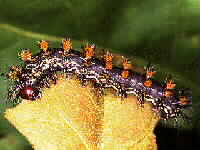
A large caterpillar, 1-3/4″ to 2-1/4″ long when mature. It is yellow-brown to purplish-black with many small white spots and a reddish head. Feeds on oak, willow and other deciduous plants.
Flannel Moth Caterpillar
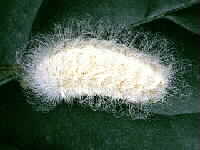
This caterpillar is about 1″ long when mature. Stinging hairs are intermixed with soft hairs in diffuse tufts. Larvae are creamy white (Upper photo), turning dark as they mature (lower photo). They feed on oak and various other shrubs and trees.
Hag Caterpillar
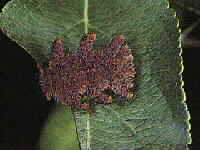
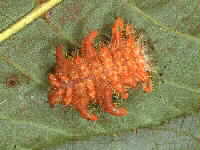
Light- to dark-brown with nine pairs (sometimes fewer) of variable-length, lateral processes, which bear the stinging hairs. It is found on various forest trees and ornamental shrubs. Not as common as the other species.
IO Moth Caterpillar
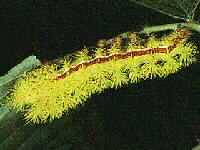
Pale green with yellow and red stripes. Often exceeds 2″ in length and is fairly stout-bodied. The nettling organs are borne on fleshy tubercles, and the spines are usually yellow with black tips. The spines are connected to poison glands. Ixora and rose are their favorite hosts.
Puss Caterpillar
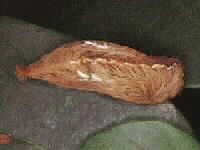
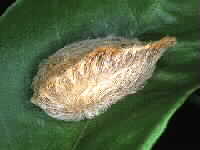
A convex, stout-bodied larva, almost 1″ long when mature, and completely covered with gray to brown hairs. Under the soft hairs are stiff spines that are attached to poison glands. When touched, these poisonous spines break off in the skin and cause severe pain. Most often found on oaks and citrus. In Florida there are two generations a year, one in spring and the other in fall.
Saddleback Caterpillar
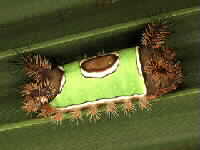
Brown with a green back and flanks, on which there is a conspicuous brown oval central area that usually is bordered with white. The brown spot looks like a saddle, and the green area looks like a saddle blanket. It may exceed an inch in length and is stout-bodied. The primary nettling hairs are borne on the back of paired fleshy protuberances toward the front and hind ends of the body. There is also a row of smaller stinging organs on each side.
Spiny Oak-Slug Caterpillar
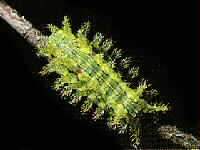
A pale-green caterpillar about 3/4″ long when mature. Favorite food plants include oak, willow and other deciduous plants.
Tussock Moth Caterpillar
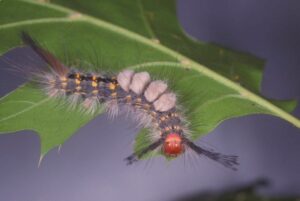
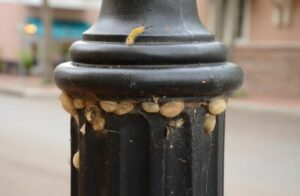
Photos by Lyle Buss, University of Florida
Small, dimorphic caterpillars with prominent antennae. Females have short wings, but cannot fly.

